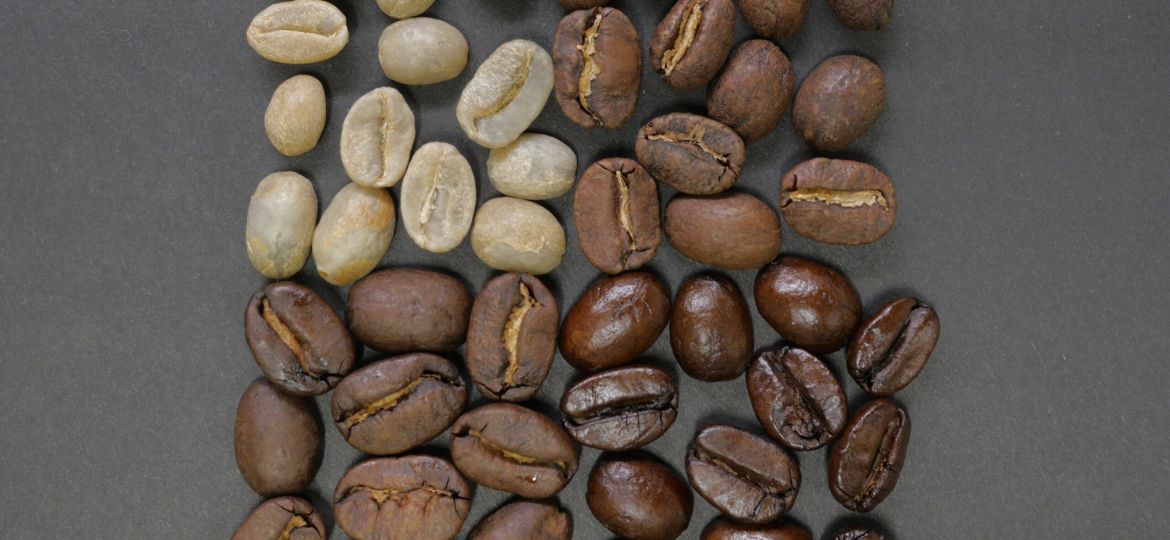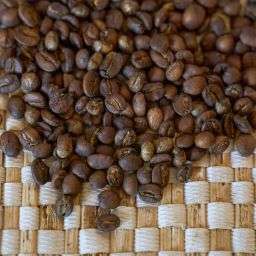
Coffee beans are the seeds of the Coffea plant and the source of one of the world’s most beloved beverages. They undergo various processes, from growing on coffee plants to being roasted, before they become the aromatic beans used in coffee making.
The appearance, flavor, and quality of coffee beans significantly influence the taste and quality of the coffee we drink, underscoring their importance in coffee production.
Key Takeaways
- Types of Coffee Beans: Arabica, Robusta, Liberica, and Excelsa beans each have unique characteristics.
- Growing Conditions: Climate, altitude, and soil type impact bean appearance and flavor.
- Roasting Influence: Roasting levels alter beans’ color, size, and taste.
- Selection Tips: Choosing beans based on appearance, origin, and roast can enhance your coffee experience.
What Do Coffee Beans Look Like
Coffee beans, which are actually seeds inside coffee cherries, vary in appearance based on their type and processing. Before roasting, beans are generally green with a smooth texture. Post-roasting, they take on hues ranging from light brown to nearly black, depending on the roast level.
Arabica beans tend to be larger and more oval-shaped than the smaller, rounder Robusta beans. The Liberica and Excelsa beans, less common, have distinctive shapes and sizes that set them apart.
The process from cherry to bean is intricate. The outer fruit layer, or cherry, is removed, revealing the green beans inside, which are then dried, processed, and roasted. This transformation is crucial, as it develops the beans’ flavor profiles and physical characteristics, preparing them for brewing.
Understanding these aspects provides insight into the diverse world of coffee and enhances the appreciation of the beverage’s complexity.
Types of Coffee Beans
Coffee beans are categorized into four main types: Arabica, Robusta, Liberica, and Excelsa. Each type offers distinct flavors and physical characteristics, influenced by their growing conditions and genetic makeup.
Arabica Beans: The most popular globally, Arabica beans are known for their sweet, fruity flavors and higher acidity. They are typically grown at higher altitudes, which contributes to their flavor complexity. Arabica beans are larger and more oval-shaped compared to Robusta.
Robusta Beans: With a stronger, more bitter flavor, Robusta beans contain more caffeine than Arabica. They are hardier plants, able to grow at lower altitudes and resistant to pests. The beans are smaller and rounder than Arabica and are often used in espresso blends for their rich crema.
Liberica Beans: Unique in shape and flavor, Liberica beans are larger and more irregular than Arabica and Robusta. They offer a smoky, somewhat woody taste that’s distinct from the other types. Liberica grows well in hot, humid climates at low altitudes.
Excelsa Beans: Often considered a variant of Liberica, Excelsa beans grow predominantly in Southeast Asia. They offer a tart, fruity flavor profile, which is quite different from the other beans. Excelsa beans contribute complexity to coffee blends, adding both light and dark roast characteristics.
The Journey from Cherry to Bean
The process of transforming a coffee cherry into a bean ready for brewing is a meticulous one. Coffee cherries grow on the Coffea plant and contain the seeds that eventually become coffee beans.
Harvesting: The cherries are harvested when they reach maturity, which is typically when they exhibit a deep red color. This stage is crucial for flavor development, as the ripeness of the cherry impacts the sweetness and acidity of the bean.
Processing: Once harvested, the cherries undergo processing to remove the outer fruit layer. This can be done through dry, wet, or semi-washed methods, each affecting the bean’s final taste. The beans are then dried to a specific moisture content.
Milling: After drying, the beans are milled to remove the parchment layer, revealing the green coffee bean inside. This bean is the raw product that will be shipped to roasters around the world.
Roasting: The final transformation occurs during roasting, where green beans are heated to develop their flavor, aroma, and color. The roast level, from light to dark, determines the bean’s final taste profile, size, and color.
Roasting and Its Impact on Appearance
Roasting is a pivotal process that significantly alters the color, size, and texture of coffee beans. Initially green, the beans undergo a transformation through the roasting process, which affects their physical and chemical characteristics.
Color: Roasting causes coffee beans to change color from green to various shades of brown. Light roasts retain a lighter brown hue, while medium roasts achieve a richer brown. Dark roasts turn almost black due to the caramelization of sugars and the breakdown of other compounds.
Size: As beans are roasted, they lose moisture and expand in size. The extent of this expansion varies with the roast level; darker roasts tend to be larger due to more extended roasting times, although they lose more weight due to moisture loss.
Texture: The bean’s texture changes from dense and hard to more brittle and porous, which impacts the brewing process. Darker roasts result in a more brittle bean, which can influence the grind and extraction rate during brewing.
How to Choose the Right Coffee Beans
Selecting the right coffee beans is crucial for achieving your desired coffee experience. Consider the following factors:
Appearance: Look for uniformity in bean size and color, which indicates quality roasting and handling.
Origin: Beans from different regions offer distinct flavor profiles. For example, African beans are known for their fruity and floral notes, while Latin American beans often have a nutty and chocolatey character.
Roast Level: Choose a roast level that aligns with your flavor preference. Light roasts are more acidic and retain more of the bean’s original flavors, while dark roasts offer a bolder, more intense taste.
FAQs
Q: How do different roast levels affect the taste of coffee? A: Light roasts tend to be more acidic and retain the bean’s original flavors, while dark roasts are less acidic, with a more pronounced bitterness and boldness.
Q: How should I store coffee beans to maintain their freshness? A: Store coffee beans in an airtight container at room temperature, away from direct sunlight and moisture.
Q: Does the appearance of coffee beans indicate quality? A: Yes, uniform size and color typically indicate careful selection and roasting, which are markers of quality.
Final Thoughts
Understanding the nuances of coffee beans, from their types to the effects of roasting, empowers you to select and brew coffee that aligns with your taste preferences. The diversity and complexity of coffee beans are what make the coffee experience so rich and varied, offering a world of flavors to explore and enjoy.









